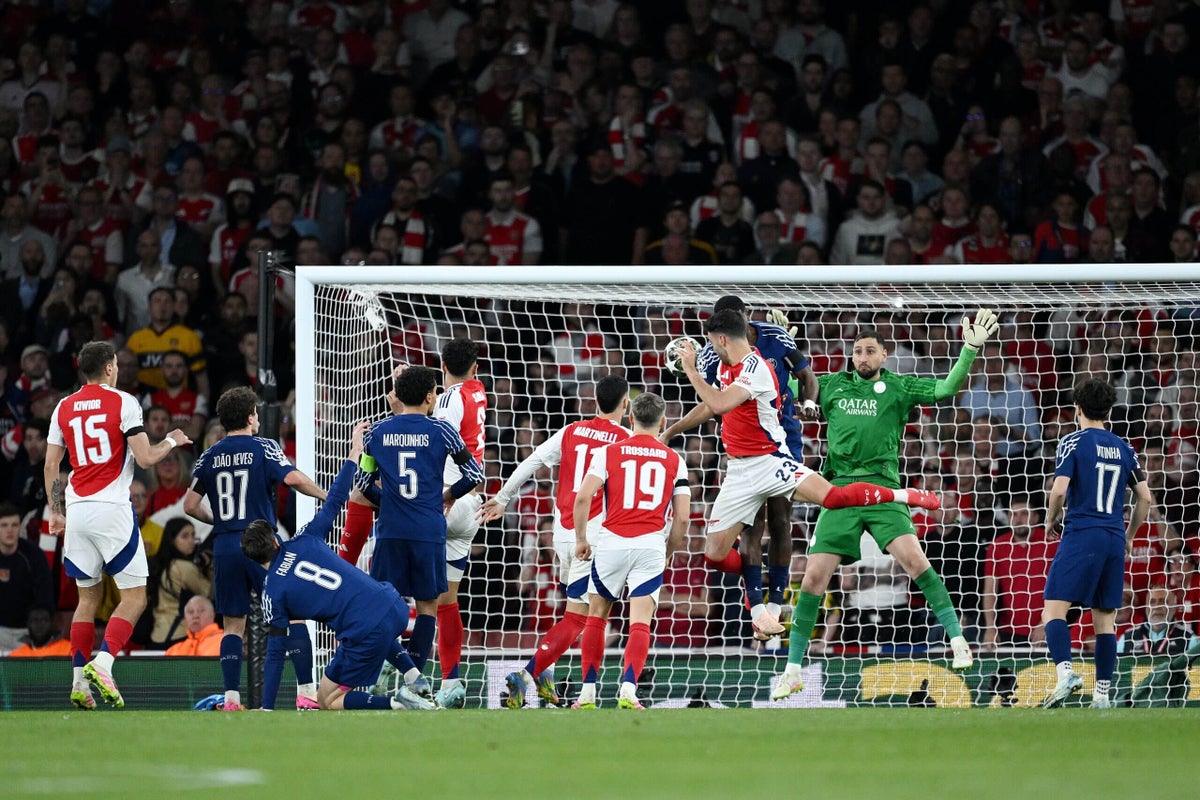Arsenal's Offside Free-Kick: A Tactical Analysis and Risk Assessment
Arsenal's recent use of an offside free-kick tactic has sparked debate among football analysts and fans alike. This innovative approach, while potentially yielding significant rewards, also carries considerable risk. This article will delve into a tactical analysis of this strategy, assessing its strengths, weaknesses, and the overall risk involved.
The Tactic Explained:
The tactic involves positioning a player in an offside position during a free-kick. The intention isn't to receive the ball directly, but rather to create confusion and distract the opposing defensive wall. The hope is that the wall will jump prematurely or move out of position, leaving a gap for a teammate to exploit and score. It requires precise execution, impeccable timing, and a high degree of coordination between the players involved. Successful execution hinges on the offside player remaining still until the ball is kicked, ensuring they aren't penalized for interfering with play.
Strengths of the Offside Free-Kick:
- Surprise Element: The unexpected nature of the tactic can catch opponents off guard, disrupting their defensive setup and creating opportunities. The element of surprise is a significant advantage, especially against teams unfamiliar with this strategy.
- Defensive Wall Disruption: The primary goal is to disorganize the defensive wall, forcing players to hesitate or move inappropriately. This hesitation can create the crucial space needed for a successful shot.
- Increased Goal-Scoring Chances: If executed perfectly, this tactic can dramatically increase the probability of scoring from a free-kick situation, converting what might otherwise be a low-percentage chance into a higher one.
Weaknesses and Risk Assessment:
- High Failure Rate: The tactic is inherently risky. A slight misjudgment in timing or positioning can lead to a quick counter-attack for the opposing team, or a wasted opportunity for Arsenal. The margin for error is extremely small.
- Disciplinary Action: If the offside player moves before the ball is kicked, or interferes with play, it can result in a free-kick to the opposing team, potentially in a more dangerous position.
- Opponent Adaptation: As the tactic gains notoriety, opponents will likely adapt their defensive strategies to counteract it, reducing its effectiveness over time. Teams may implement specific drills and training to mitigate the risks associated with this unusual set-piece play.
- Team Coordination: The success of this tactic relies heavily on perfect teamwork and communication. Any miscommunication or lack of coordination among players could lead to a breakdown in the play.
Conclusion:
Arsenal's offside free-kick tactic is a high-risk, high-reward strategy. While it offers the potential for dramatic goal-scoring opportunities, its effectiveness is heavily reliant on precision, timing, and a high degree of coordination. The risk of failure, disciplinary action, and opponent adaptation must be carefully considered. While innovative, its long-term viability remains to be seen, depending heavily on the adaptability of opposing teams and Arsenal's continued success in its execution. Only time will tell whether this tactical gamble will become a regular feature of Arsenal's game or fall by the wayside.
Further Reading:
- [Link to an article discussing other innovative free-kick strategies]
- [Link to an article analyzing Arsenal's overall tactical approach]
Call to Action: What are your thoughts on Arsenal's offside free-kick tactic? Share your opinions and predictions in the comments below!

